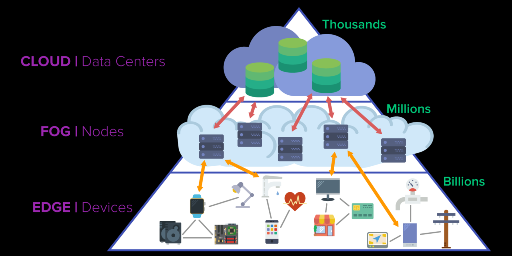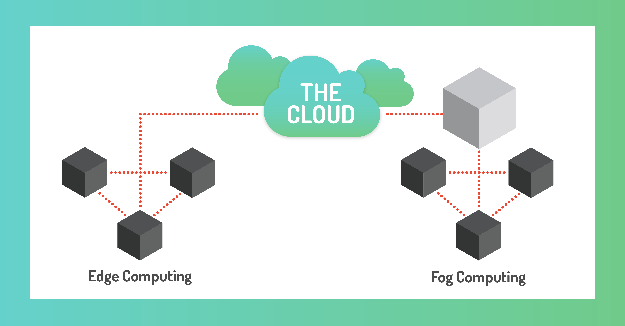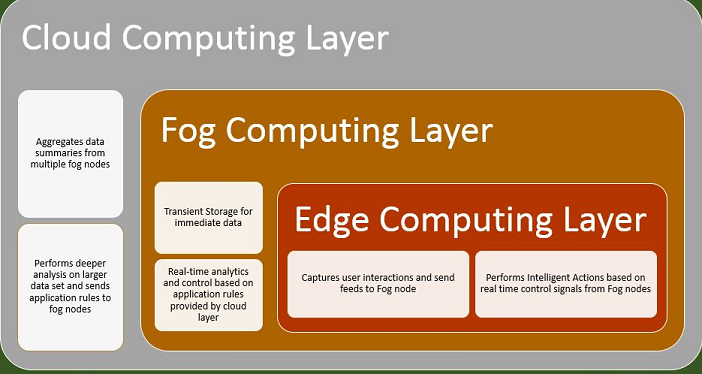|
CS6320: SW Engineering of Web Based Systems |
||||||
|
Fog and Edge computing and the Difference
Fog and edge computing in IoT applications are network and system architectures that attempt to collect, analyze, and process data from assets (the things of the IoT) more efficiently than traditional cloud architecture. These architectures share similar objectives:
reduce the amount of data sent to the cloud
To decrease network and Internet latency
To improve system response time in remote mission-critical applications.
FOG computing
Fog Computing or fog networking also known as fogging,[2][3] is an architecture that uses one or more collaborative end-user clients or near-user edge devices to carry out a substantial amount of storage (rather than stored primarily in cloud data centers), communication (rather than routed over the internet backbone), control, configuration, measurement and management (rather than controlled primarily by network gateways such as those in the LTE core network). from Wikipedia
Edge computing
Edge computing is a way of optimising cloud computing systems by performing data processing at the edge of the network, near the source of the data. from Wikipedia
This sounds the same...well they both
cover a wide range of technologies including wireless sensor networks, mobile data acquisition, mobile signature analysis, cooperative distributed peer-to-peer ad hoc networking and processing also classifiable as local cloud/fog computing and grid/mesh computing, dew computing, mobile edge computing, cloudlet, distributed data storage and retrieval, autonomic self-healing networks, remote cloud services, augmented reality, and more.
So is there a difference between Fog & Edge Computing???
-- sometimes NO and
--sometimes YES --lets understand this better with IoT in mind
from http://info.opto22.com/fog-vs-edge-computing
Fog computing pushes intelligence down to the local area network (LAN) level of network architecture, processing data in a fog node or IoT gateway.
Edge computing pushes the intelligence, processing power, and communication capabilities of an edge gateway or appliance directly into devices like PACs (programmable automation controllers).
FOG:
First the electrical signals from things are traditionally wired to the I/O points of an automation controller (PLC or PAC). The automation controller executes a control system program to automate the things.
Next the data from the control system program is sent to an OPC server or protocol gateway, which converts the data into a protocol Internet systems understand, such as MQTT or HTTP.
Then the data is sent to another system, such as a fog node or IoT gateway on the LAN, which collects the data and performs higher-level processing and analysis. This system filters, analyzes, processes, and may even store the data for transmission to the cloud or WAN at a later date.
EDGE
Edge computing simplifies this communication chain and reduces potential points of failure.
In edge computing, physical assets like pumps, motors, and generators are again physically wired into a control system where the PAC automates them by executing an onboard control system program. Intelligent PACs with edge computing capabilities collect, analyze, and process data from the physical assets they’re connected to—at the same time they’re running the control system program.
PACs then use edge computing capabilities to determine what data should be stored locally or sent to the cloud for further analysis. In edge computing, intelligence is literally pushed to the network edge, where our physical assets or things are first connected together and where IoT data originates.
Some people use Fog and Edge as Synonyms and others say Fog can include Edge computing Layer (or may have no Edge computing and only Fog computing).....Edge is very near or on the device/thing in an IOT where Fog is in the same LAN but on a more traditional device - machine/laptop/special computer-controller.


